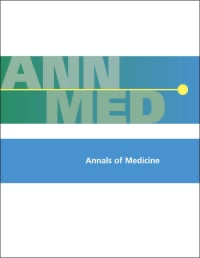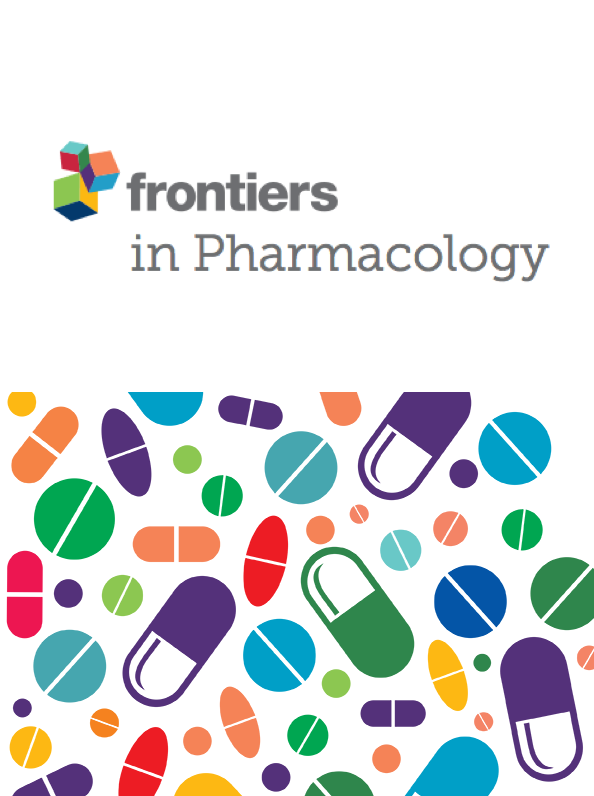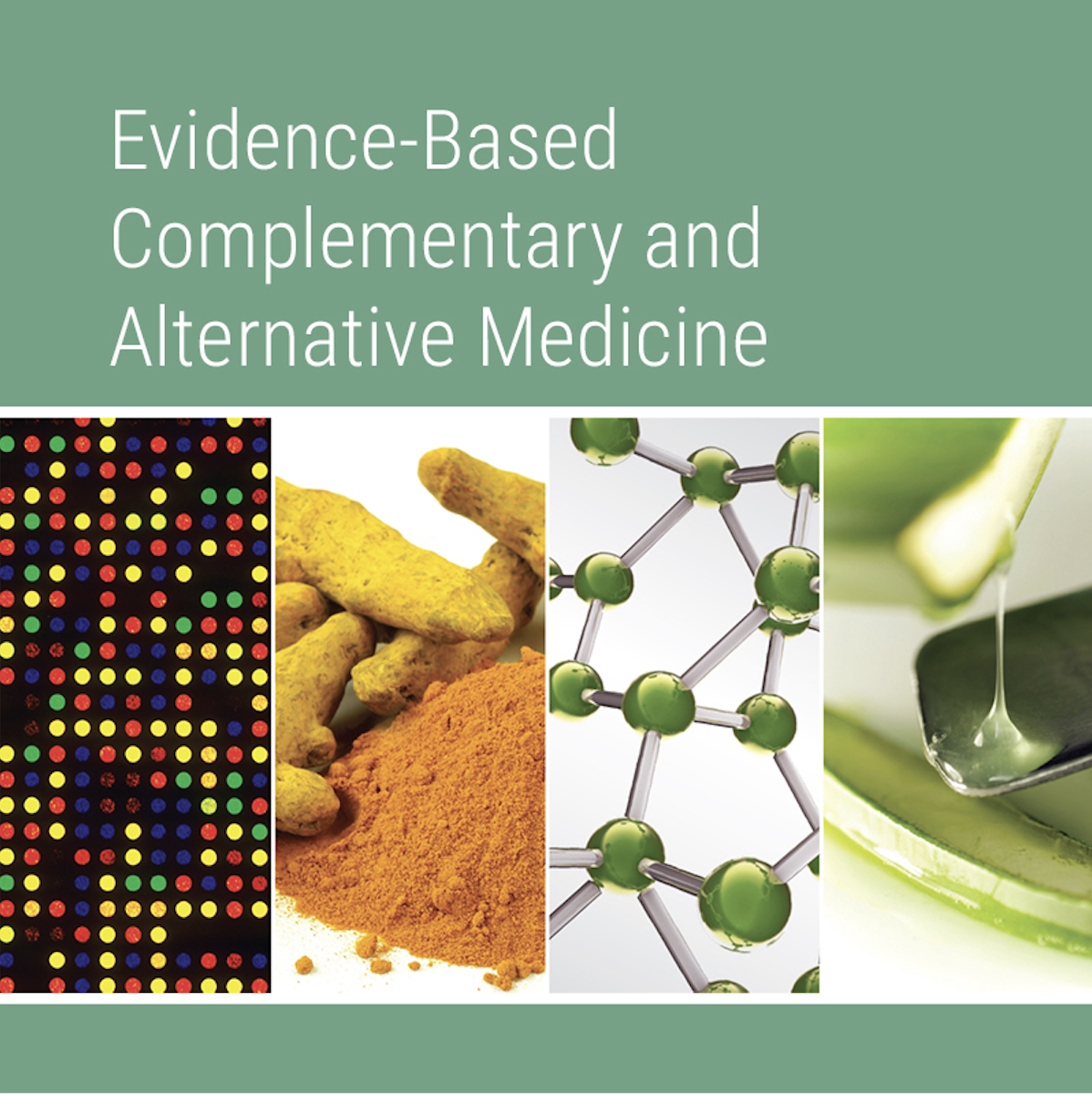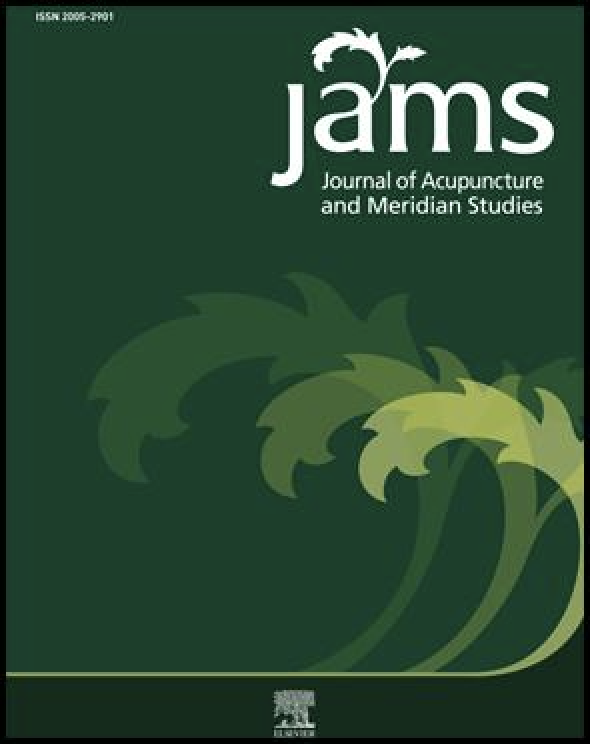Gui Zhi
How to submit an article:
- Registered users can submit any published journal article that has a unique DOI (Digital Object Identifier) name or link to Research Hub.
- For example, you can paste the full DOI link:
https://doi.org/10.1109/5.771073or just the DOI name:10.1109/5.771073into the field above and click submit. - The person who is first to submit a valid article to Research Hub will forever be credited for it, and every article submission earns you +6 Research Points.
Also known as: Ramulus Cinnamomi Cassiae
Published research studies are articles that present the findings of original research that has undergone a peer-review process and has been made publicly available in scholarly journals, books or other media.

A network pharmacology approach to predict potential targets and mechanisms of “Ramulus Cinnamomi (cassiae) – Paeonia lactiflora” herb pair in the treatment of chronic pain with comorbid anxiety and depression
2022 Jan 31 Annals of Medicine Pan HT, Xi ZQ, Wei XQ, Wang K
Network Pharmacology Depression Chronic PainThe Gui Zhi-Shao Yao herb pair in traditional Chinese medicine potentially treats chronic pain, anxiety, and depression through interactions with nine key targets.

Ethnopharmacological Survey of Traditional Chinese Medicine Pharmacy Prescriptions for Dysmenorrhea
2021 Dec 21 Frontiers in Pharmacology Su KH, Su SY, Ko CY, Cheng YC, Huang SS, Chao J
The study concludes that Angelica sinensis (Dang Gui), Ligusticum chuanxiong Hort (Chuan Qiong), Rehmannia glutinosa Libosch (Di Huang), Paeonia lactiflora Pall (Bai Shao), Hedysarum polybotrys Hand.-Mazz (Hong Qi), Lycium chinense Mill (Gou Qi Zi), and Cinnamomum cassia (Gui Zhi) are the seven core medicinal materials frequently used in TCM prescriptions for dysmenorrhea, forming 58 combinations with 107 association rules. The study emphasizes the valuable knowledge on TCM pharmacy prescriptions for dysmenorrhea and suggests potential avenues for future pharmacological research and the development of naturally derived medications.
Network Pharmacology
Efficacy and Safety of Guizhi Decoction AssociatedFormulas for Allergic Rhinitis: A Systematic Review
2021 Jan 13 Evidence-Based Complementary and Alternative Medicine Yang S, Fu Q, Deng H, Wu J, Zhang Q, Wang L, et al.
Systematic Review Gui Zhi Tang Gui ZhiGui Zhi Decoction and associated formulas significantly improve the effectiveness of allergic rhinitis treatments when used alone or combined with Western medicine.

The traditional uses, phytochemistry, pharmacology and toxicology of Cinnamomi ramulus: a review
2019 Nov 21 Journal of Pharmacy and Pharmacology Liu J, Zhang Q, Li RL, Wei SJ, Huang CY, Gao YX, et al.
The convictive evidence from modern pharmacology research supports the traditional application of Cinnamomi ramulus. However, further studies on the structure–activity relationship of some of the isolated compounds may improve their biological potency. More toxicological studies will also contribute to the progress of clinical trial studies.
Network Pharmacology Review Article Gui Zhi
Gyejibongnyeong-Hwan (Gui Zhi Fu Ling Wan) Ameliorates Human Uterine Myomas via Apoptosis
2019 Sep 25 Frontiers in Pharmacology Lee SM, Choi ES, Ha E, Ji KY, Shin SJ, Jung J
Experimental Study Gui Zhi Fu Ling WanGui Zhi Fu Ling Wan can potentially reduce and induce apoptosis in uterine leiomyomas cells.
Research insights are moderated by the Research Hub team and offer an at-a-glance overview of interesting research findings.

2022 Annals of Medicine
The Gui Zhi-Shao Yao herb pair in traditional Chinese medicine potentially treats chronic pain, anxiety, and depression through interactions with nine key targets.
Network Pharmacology Chronic Pain Depression
A network pharmacology approach to predict potential targets and mechanisms of “Ramulus Cinnamomi (cassiae) – Paeonia lactiflora” herb pair in the treatment of chronic pain with comorbid anxiety and depression
Pan HT, Xi ZQ, Wei XQ, Wang K

2021 Trials
Gynoclear™, a formulation of six herbs, could potentially reduce the severity and duration of pain and other symptoms associated with endometriosis.
Study Protocol Endometriosis Gui Zhi Fu Ling Wan
The effectiveness of a modified Gui Zhi Fu Ling Wan formulation (Gynoclear™) for the treatment of endometriosis: a study protocol for a placebo-controlled, double-blind, randomised controlled trial
Armour M, Al-Dabbas MA, Ee C, Smith CA, Ussher J, Arentz S, et al.

2021 Evidence-Based Complementary and Alternative Medicine
Gui Zhi Decoction and associated formulas significantly improve the effectiveness of allergic rhinitis treatments when used alone or combined with Western medicine.
Systematic Review Gui Zhi Tang
Efficacy and Safety of Guizhi Decoction AssociatedFormulas for Allergic Rhinitis: A Systematic Review
Yang S, Fu Q, Deng H, Wu J, Zhang Q, Wang L, et al.

2019 Frontiers in Pharmacology
Gui Zhi Fu Ling Wan can potentially reduce and induce apoptosis in uterine leiomyomas cells.
Experimental Study Gui Zhi Fu Ling Wan
Gyejibongnyeong-Hwan (Gui Zhi Fu Ling Wan) Ameliorates Human Uterine Myomas via Apoptosis
Lee SM, Choi ES, Ha E, Ji KY, Shin SJ, Jung J

2019 Biomedicines
Guizhi Fuling Wan, a traditional herbal formula, can improve peripheral blood flow in menopausal hot flush sufferers, despite not changing the frequency or severity of the flushes.
Network Pharmacology Gui Zhi Fu Ling Wan Hot Flushes Menopause
A Classic Herbal Formula Guizhi Fuling Wan for Menopausal Hot Flushes: From Experimental Findings to Clinical Applications
Li , Hung , Li , Yang
Review Articles
Review articles summarise and critically evaluate the current state of research on a specific topic or field by synthesising multiple primary research studies.

Efficacy and Safety of Guizhi Decoction AssociatedFormulas for Allergic Rhinitis: A Systematic Review
2021 Jan 13 Evidence-Based Complementary and Alternative Medicine Yang S, Fu Q, Deng H, Wu J, Zhang Q, Wang L, et al.
Systematic Review Gui Zhi Tang Gui ZhiGui Zhi Decoction and associated formulas significantly improve the effectiveness of allergic rhinitis treatments when used alone or combined with Western medicine.

The traditional uses, phytochemistry, pharmacology and toxicology of Cinnamomi ramulus: a review
2019 Nov 21 Journal of Pharmacy and Pharmacology Liu J, Zhang Q, Li RL, Wei SJ, Huang CY, Gao YX, et al.
The convictive evidence from modern pharmacology research supports the traditional application of Cinnamomi ramulus. However, further studies on the structure–activity relationship of some of the isolated compounds may improve their biological potency. More toxicological studies will also contribute to the progress of clinical trial studies.
Network Pharmacology Review Article Gui Zhi
A Classic Herbal Formula Guizhi Fuling Wan for Menopausal Hot Flushes: From Experimental Findings to Clinical Applications
2019 Aug 18 Biomedicines Li , Hung , Li , Yang
Network Pharmacology Systematic Review Gui Zhi Fu Ling Wan Menopause Hot FlushesGuizhi Fuling Wan, a traditional herbal formula, can improve peripheral blood flow in menopausal hot flush sufferers, despite not changing the frequency or severity of the flushes.
Clinical Trials
Clinical trials are research studies that involve people and are conducted to evaluate the safety and efficacy of new treatments or interventions, such as drugs, medical devices, or behavioural therapies.
Study Protocols
Published study protocols are detailed plans that outline the objectives, methodology, statistical analyses, and organisation of a research study that have been made publicly available for others to review and use as a reference.
Presentation Slides

Network Pharmacology
The Gui Zhi-Shao Yao herb pair in traditional Chinese medicine potentially treats chronic pain, anxiety, and depression through interactions with nine key targets.
Pan HT, Xi ZQ, Wei XQ, Wang K

Study Protocol
Gynoclear™, a formulation of six herbs, could potentially reduce the severity and duration of pain and other symptoms associated with endometriosis.
Armour M, Al-Dabbas MA, Ee C, Smith CA, Ussher J, Arentz S, Lawson K, Abbott J

Systematic Review
Gui Zhi Decoction and associated formulas significantly improve the effectiveness of allergic rhinitis treatments when used alone or combined with Western medicine.
Yang S, Fu Q, Deng H, Wu J, Zhang Q, Wang L, Yao X

Experimental Study
Gui Zhi Fu Ling Wan can potentially reduce and induce apoptosis in uterine leiomyomas cells.
Lee SM, Choi ES, Ha E, Ji KY, Shin SJ, Jung J

Network Pharmacology
Guizhi Fuling Wan, a traditional herbal formula, can improve peripheral blood flow in menopausal hot flush sufferers, despite not changing the frequency or severity of the flushes.
Li , Hung , Li , Yang

Cohort Study
Gui-zhi-fu-ling-wan, a traditional Chinese medicine, can effectively alleviate hot flashes in young patients in a safe manner.
Cho KH, Kim YS, Jung WS, Kim TH
Executive Summary
Write an executive summary in the form of a blog article on the topic of "Research into Chinese medicine treatment for Gui Zhi" summarising the research below and using language that can be easily understood by patients and avoiding medical jargon using a professional and caring tone of voice.
Write an executive summary in the form of a blog article on the topic of "Researched Chinese medicine treatments for Gui Zhi" summarising the research below in an objective and easy to understand way, and using language that can be easily understood by patients. Group the article into Chinese medicine treatments first, followed by nutrition and other treatments. Avoid using medical jargon and use a professional and caring tone of voice.
Write me a concise but easy to understand executive summary on the topic of "Chinese medicine treatments for Gui Zhi" based on the following research that I will give you. Your summary should be 2 paragraphs long in Australian English spelling and include references to the studies.
A Network Pharmacology published in 2022 in the journal Annals of Medicine found that The Gui Zhi-Shao Yao herb pair in traditional Chinese medicine potentially treats chronic pain, anxiety, and depression through interactions with nine key targets. The methodology in this research utilised network pharmacology to explore the active components of the "Gui Zhi-Shao Yao" herb pair and their possible targets. Initially, 15 active compounds were identified through a series of analysis which revealed about 130 potential targets. By considering the intersections between the targets of the "Gui Zhi-Shao Yao" herb pair and chronic pain, anxiety disorder, and mental depression, nine vital targets were identified and listed in order of importance. The results discussion revealed that the "Gui Zhi-Shao Yao" herb pairing acted on the nine identified key targets to alleviate chronic pain, anxiety, and depression. Gene ontology and pathway analysis demonstrated that there were 11 primary pathways, including AGE-RAGE signalling pathway, IL-17 signalling pathway, and TNF signalling pathway. These pathways appear to be actively involved in the pathological processes, providing a holistic understanding of how the "Gui Zhi-Shao Yao" herb pair functions therapeutically.
A Study Protocol published in 2021 in the journal Trials found that Gynoclear™, a formulation of six herbs, could potentially reduce the severity and duration of pain and other symptoms associated with endometriosis. The methodology consisted of a randomized, double-blind, placebo-controlled trial with a minimum of 90 participants across Australia who have confirmed endometriosis and moderate or greater pelvic pain. These participants were equally divided to receive either Gynoclear™ or a placebo. Gynoclear's active ingredients consist of six herbs, namely Safflower, Chinese cinnamon, Hoelen, Tree peony, Peony, and Red sage. The participants were required to document their pain experiences for a total of five months, which included a month of screening, two months of treatment, and a month post-treatment. The main variable being studied was the change in endometriosis-related pain. The results of the study aimed to establish the efficacy of Gynoclear™ in reducing endometriosis-related pain and other symptoms. Secondary outcomes encompassed change in health-related quality of life, alterations in the use of rescue analgesics, and changes in sexual discomfort and fatigue. The practicality and usefulness of Gynoclear™ intended to serve both healthcare professionals and individuals suffering from endometriosis.
A Systematic Review published in 2021 in the journal Evidence-Based Complementary and Alternative Medicine found that Gui Zhi Decoction and associated formulas significantly improve the effectiveness of allergic rhinitis treatments when used alone or combined with Western medicine. The study aimed to evaluate the efficacy of Guizhi Decoction and associated formulas for treating allergic rhinitis. It included a comprehensive search of seven online databases for studies published until February 23, 2020. Each selected study's quality was assessed using the Cochrane Collaboration risk of bias tool. The research used systematic reviews based on the Cochrane systematic review method, facilitated by RevMan 5.3 Software. Interventions in the study varied from using Guizhi Decoction and associated formulas alone to combining them with Western medicine, acupoint-based therapy, Chinese patent medicine, and placebo control. Data from 23 trials involving 2281 participants were collected and systematically analysed. The results showed that Guizhi Decoction and associated formulas, either alone or in conjunction with Western medicine or acupoint-based therapies, exhibited higher efficacy compared to Western medicine alone. The study also reported that adding nasal traditional Chinese medicine fumigation therapy to the Guizhi Decoction formulations could further improve treatment effectiveness. Adverse events were primarily mild and primarily associated with the control groups that used Western medicine alone, requiring no specific medical intervention.
A Experimental Study published in 2019 in the journal Frontiers in Pharmacology found that Gui Zhi Fu Ling Wan can potentially reduce and induce apoptosis in uterine leiomyomas cells. In the study, human uterine myoma cells (hUtMCs) were collected from patients who had undergone surgery for this condition. The viability of these cells was tested when exposed to various doses of Gyejibongnyeong-hwan (GBH). Determination of adequate concentration for the treatment was also performed, ensuring that it did not affect normal cells adversely. Western blotting was employed to identify the expression levels of certain proteins that indicate cellular apoptosis, while the levels of reactive oxygen species were evaluated through fluorescence microscopy. Finally, the researchers looked into the time-dependent anti-neoplastic effect of GBH in order to establish an appropriate treatment duration under a non-harmful concentration of the medication. The results showed that Gyejibongnyeong-hwan (GBH) drastically reduced the viability and number of hUtMCs within 48 hours in a dose-dependent manner. It was identified that the ratio of certain proteins and the expression of other apoptosis-related ones increased, suggesting that GBH induced cellular self-destruction in uterine leiomyomas. Moreover, it was shown that GBH noticeably increased the mitochondrial concentration of reactive oxygen species. Conversely, by using certain inhibitors along with GBH, the apoptotic effect mediated by GBH was mitigated. This evidence suggests that GBH could potentially trigger apoptosis of leiomyomas and hence, presents a promising therapeutic agent in managing uterine leiomyomas.
A Network Pharmacology published in 2019 in the journal Biomedicines found that Guizhi Fuling Wan, a traditional herbal formula, can improve peripheral blood flow in menopausal hot flush sufferers, despite not changing the frequency or severity of the flushes. The methodology used in this study involved a comprehensive literature search across 20 English and Chinese databases for relative clinical and experimental studies. From the nearly 13,000 studies identified, only 46 were evaluated as relevant and thus included in the review. These articles were comprised of seven clinical studies detailing Guizhi Fuling Wan's effects on menopausal hot flushes and 35 phytochemical analysis studies that identified the 169 chemical compounds in the herbal formula. Four experimental studies were also utilized to discover the potential therapeutic effects and target proteins/cytokines related to these hot flushes. The findings indicate that Guizhi Fuling Wan, despite exhibiting no significant impact on the frequency or severity of menopausal hot flushes, may have positive effects on peripheral blood flow. The blood flow improvements were specifically noted in the fingertips, jaw, and toes. Additionally, the analysis of the herbal formula revealed 169 distinct chemical compounds. Through experimental studies, potential therapeutic effects on target proteins/cytokines - including estrogen receptor beta with genetic variation, the calcitonin gene-related peptide receptor, and interleukin-8, were further highlighted. However, these therapeutic effects were inconsistent across different studies, which may be due to dosage differences and genotype variation.
A Cohort Study published in 2011 in the journal Journal of Acupuncture and Meridian Studies found that Gui-zhi-fu-ling-wan, a traditional Chinese medicine, can effectively alleviate hot flashes in young patients in a safe manner. For the methodology, this study was conducted retrospectively, examining the medical records of patients who visited the Department of Cardiovascular and Neurologic Disease, Kyung Hee Oriental Medical Center for hot flashes from between October 1, 2003, to October 1, 2008. Out of 60 cases reviewed, 37 were selected based on the inclusion criteria. The primary measure of improvement was assessed using the visual analog scale. In the discussion of results, it was noted that the mean improvement in symptoms was significant and a majority of patients experienced a 50% improvement. The secondary analysis revealed that the outcomes of differential diagnosis of cold and hot syndrome and blood stasis syndrome did not affect the scores. Importantly, only a trivial percentage of patients reported adverse events, indicating that Gui-zhi-fu-ling-wan may be a safe therapy for hot flashes.
Moderation Tools
Topic
Sign In
Users not signed in are limited to viewing the 5 most recent items of content.